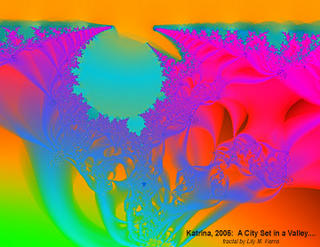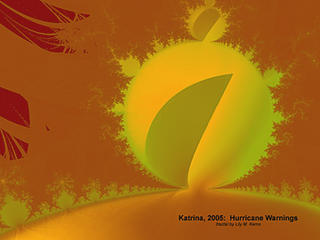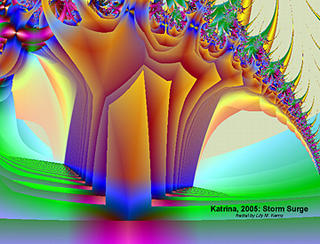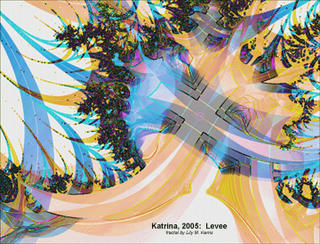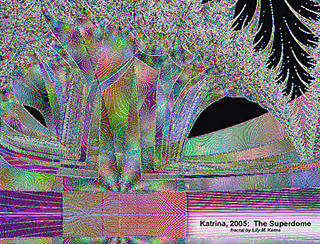I've been getting a lot of questions about how these images were made, so here is a bit of generic information.
Fractals are patterns of repetition that are self-similar at any scale. Trees--leaves, branches, roots-- are fractal because they share similar patterns no matter how small or large the tree. A spiral is a fractal pattern whether you are looking at DNA, a snail shell or a galaxy. There are many other things that have fractal qualities, ranging from music to economic growth.
There are a variety of programs that create beautiful and very complex images based on mathematical patterns. These are available for download on the web. Most are free or fairly inexpensive. A search for "fractal images" will give you links to all kinds of sites with fractals. A search for "fractal programs" or "fractal generators" will give you links to a wide variety of sites that either have downloads or links to downloads.
These are image generating programs, not image manipulation programs
(like Photoshop or Print Shop Pro.) When you select various combinations
of possibilities from drop down menus, the programs generate one or
more images based on the information you have given it. Most programs
also have options for modifying either the image and/or the ways colors
are applied. The majority of the programs are Windows based.
The two programs I used for the fractals on my blog are Vchira and
Tierazon, which you can find by searching either for them or for Stephen
Ferguson who is their author. These are both quite easy to use, although
Tierazon is more complex. Just ignore anything that asks for a number
until you are comfortable with playing with the program.
Fractal Forge and Fractal Explorer are other fairly simple ones. UltraFractal (not free) is one of the best available. Apophysis is very simple for beginners, but complex if you want to learn to master it. It creates a different kind of fractal than the others mentioned. I do not recommend the program Fractint for beginners, however, unless you have a very strong math background. (Besides it is DOS based.)
If you download a program, don't forget that there are usually help files, often online tutorials and/or forums.
I teach a class that is an overview of fractals and their possibilities
as a design resource. The next session opens the first of October at
http://QuiltUniversity.com
I've also opened a Yahoo group
http://groups.yahoo.com/group/fractal-quilters/ as a place to talk with
others who are using fractals as a design resource. It is a varied
group--experienced and beginner quilters, fractal beginners and experienced fractalists, mathematicians and math-handicapped. There are also several needleworkers in other media.
Fractals are a very big subject. But be warned. It is very easy to get hooked!

